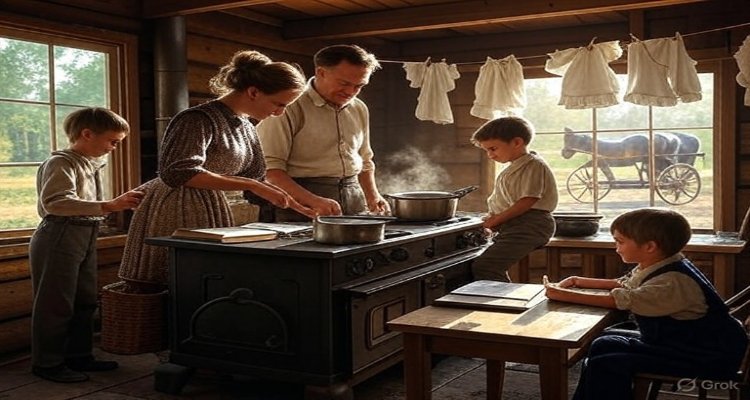Living Like It’s 1850: The Subculture That Rejects Modern Lif
A growing subculture is rejecting modern conveniences and choosing to live as if it were 1850. Here’s why the movement is spreading and what it means.
Introduction
On the edges of bustling cities and deep within rural landscapes, a quiet movement is gaining ground—people choosing to live as if it were still 1850. While smartphones, high-speed internet, and artificial intelligence dominate daily life for most, this subculture is deliberately turning away from technological conveniences. They cook on wood stoves, write letters by hand, and dress in homespun garments. What may seem eccentric to outsiders is, for its followers, an act of resistance against modern excess.
Context & Background
The idea of rejecting modernity is not new. Throughout history, groups such as the Amish and Mennonites have intentionally lived apart from technological advancement, prioritizing community and tradition over innovation. In recent years, however, there has been an emergence of individuals with no ancestral tie to these religious sects who are voluntarily choosing a “pre-industrial lifestyle.”
For many, the inspiration comes from concerns about climate change, mental health, and what critics call a hyper-digital culture. Living as though it were 1850 means embracing manual labor, handcraft skills, and slower rhythms that contrast sharply with today’s always-connected, consumer-driven world.
Main Developments
Today’s “1850 revivalists” can be found across North America, Europe, and parts of Asia. Social media—even though paradoxical to their philosophy—has inadvertently helped the movement grow. Stories of young families abandoning city apartments for off-grid cabins or individuals selling possessions in order to live with only the basics circulate widely, sparking debate.
Common practices among the group include:
-
Rejecting electricity and relying on lanterns or natural light.
-
Growing their own food without industrial fertilizers.
-
Using horse-drawn transport or walking instead of cars.
-
Wearing traditional garments made of cotton, linen, or wool.
-
Avoiding digital communication, often corresponding only through handwritten letters.
For some, it is a matter of reconnecting with heritage. For others, it is a radical experiment to live free from consumerism. A smaller minority joins for reasons of survival preparedness, believing a collapse of modern systems is inevitable.
Expert Insight and Public Reaction
Sociologists note that this movement is less about nostalgia and more about resistance. Dr. Helen Garner, a cultural anthropologist at the University of Toronto, explains: “The 1850 lifestyle reflects a deep dissatisfaction with modern life. It’s not just about going backward—it’s about creating an alternative vision of how we could live, rooted in sustainability and simplicity.”
Public opinion is divided. Admirers praise the lifestyle as environmentally conscious and mentally grounding, while critics dismiss it as impractical escapism reserved for those privileged enough to “opt out” of society. Online forums often showcase heated debates, with some arguing that revivalists reject technology while still depending on modern medical or legal systems.
Impact & Implications
As urban populations struggle with digital burnout, isolation, and ecological worries, more people may be attracted to such lifestyles, even if only partially. Already, a growing number of “modern homesteaders” and “digital minimalists” adopt elements of the philosophy—gardening, unplugging from screens, or buying fewer goods—without fully abandoning electricity or modern transport.
If this subculture continues to grow, it could influence broader discussions about sustainable living and intentional communities. Urban design, consumer markets, and even energy policies may increasingly take cues from values that prioritize simplicity and resilience over convenience and speed.
Conclusion
The choice to live as though it were 1850 might never appeal to the majority, but its rise reveals deep cracks in 21st-century life. Whether seen as impractical or inspiring, this rejection of modernity forces us to ask: what, exactly, do we lose when we embrace constant progress without reflection? For its practitioners, the answer is clear—a slower, more intentional way of life is worth turning back the clock.
Disclaimer :This article is for informational purposes only. It explores emerging cultural movements and does not endorse or recommend abandoning modern medical, safety, or technological systems.











